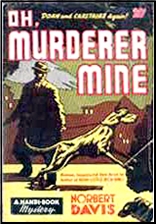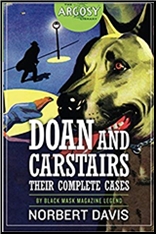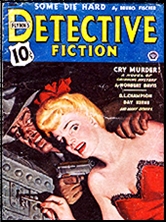Tue 18 Feb 2020
A Private Eye TV Review: MICHAEL SHAYNE “Marriage Can Be Fatal.”
Posted by Steve under Reviews , TV mysteries[6] Comments
MICHAEL SHAYNE “Marriage Can Be Fatal.” NBC, 31 March 1961 (season 1, episode 26). Richard Denning (Michael Shayne), Jerry Paris (Tim Rourke), Herbert Rudley (Lt. Will Gentry), Margie Regan (Lucy Carr). Guest Cast: Patricia Barry, Barbara Nichols, Michael Forest, Robert Harland, Nancy Rennick. Director: Walter Doniger .
As I’m sure you will recall, I reviewed an earlier episode in this series a while back, that being “Spotlight on a Corpse,” number 15 in this one season show. I expressed some disappointment with the story itself, so I thought I’d try another, one that’s on the same Alpha Video disc of the series.
I think the story let me down again this time, but not in the same way, and I”ll get to that in a minute. In between the earlier one and this one, there was some shuffling of personnel around. Lucy Hamilton, Shayne’s secretary was apparently being phased out in the earlier show, as she did not appear. She’s been replaced by a new actress (Margie Regan) to play someone named Lucy Carr instead. Tim Rourke has a new cub reporter to mentor (why I don’t know, since Paris has few enough lines of his own), and Will Gentry has a subordinate I don’t remember from before, but who has a part maybe even bigger than Gentry’s. Neither made an impression on me, and they’re not listed in the credits above.
[WARNING: SPOILER ALERT] The story is a lot more interesting, but as a mystery, it has its flaws. First when a profligate son hears that his father has been taken ill and is in the hospital, he is asked to call the man’s doctor. He starts to, then doesn’t, and calls a lady friend named Topaz McQueen (Barbara Nichols) instead.
He has a surprise for her: he proposes, and overcome with joy, she accepts. Now what’s wrong with this is that in order to inherit, the son has to be married when his father dies. Well, OK, but why wouldn’t he have called the doctor first anyway, in the hopes he can keep the father alive long enough to get himself married? I sure would, if it were me.
Then later on, a vital clue (remember the Warning) has to do with a glass door to a gun cabinet being broken into. Turns out, Mike deduces, out of thin air, that it was done by someone using a woman’s shoe, and remembering that a woman must have changed shoes because the new ones didn’t match her outfit, he pins the killing on her. But do we the viewer see the mismatched shoes? The answer is yes, but in only a briefest of shots. I had to go back and look, and yes, it’s there, but I call that a cheat, no way around it.
The star of the proceedings, I think, is Barbara Nichols, who had her role in movies down pat, that of a brassy blonde bimbo who (at least in this one) shows herself to have totally human feelings too. I also noticed the direction as having a “soap opera” sort of flair to it, so I checked out Walter Doniger ‘s resume on IMDb. I was right. Something like 173 episodes of Peyton Place also to his credit.


